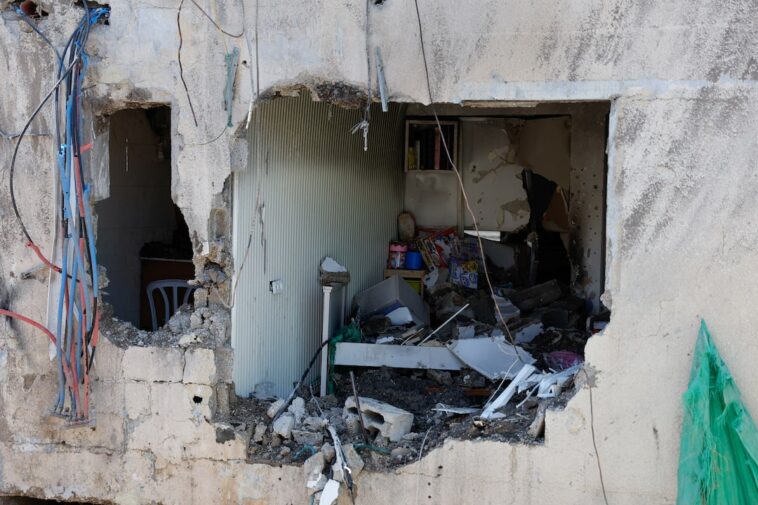Iran has hindered international inspection teams from entering its nuclear facilities, while steadfastly maintaining its commitment to continue enriching uranium. This assertion incites apprehension as estimates suggest that the Ayatollah regime might be only a few months away from developing a nuclear bomb. The International Atomic Energy Agency (IAEA), the world’s nuclear watchdog, has communicated these concerns, emphasizing that the recent US attacks have inflicted significant, if not complete, damage.
On June 22, the US launched an aggressive aerial attack targeting Iran’s nuclear sites. The onslaught involved twelve enormous 30,000lb bunker-buster bombs decimating three essential nuclear infrastructures in Tehran. The substantial impact of these strikes was acknowledged and celebrated by the then US president, who glorified the precision and effectiveness of the operation.
However, some observers questioned the full impact of these raids, suggesting that the damage inflicted may not have entirely matched the official claims. Rafael Grossi, analyzing the aftermath of the strikes, offered an expert’s perspective. The IAEA director-general cautioned that Iran’s nuclear capabilities were still intact and operational. Despite the damage, these resources could potentially facilitate the production of enriched uranium in a couple of months, or even less.
Grossi further stressed that the physical destruction caused by the strikes should not undermine the remaining industrial and technological capabilities at Iran’s disposal. He warned that these assets could be harnessed to re-initiate nuclear developments should the Iranian regime desire to do so. The potential revival of the nuclear programme was substantiated by a confidential preliminary assessment from the Pentagon, which suggested that the US attacks had only succeeded in postponing the programme’s timeline by a few months at best.
In an illustrative show of defiance, Iran’s parliament unanimously voted to discontinue all collaborations with the IAEA on the following Wednesday. The decision restricts inspectors from evaluating the actual extent of the damage dealt to the nation’s nuclear facilities. As a consequence, the task of tracing any hidden caches of highly enriched uranium that could contribute to the construction of a nuclear weapon has been made increasingly difficult.
Adding to the uncertainty, Amir-Saeid Iravani, Iran’s representative to the United Nations, asserted in a CBS interview that the country’s uranium enrichment activities would remain unabated. Furthermore, he confirmed Iran’s decision to suspend its cooperation with the IAEA. The situation has, thus, fueled mounting concerns about the future progress of Iran’s nuclear capabilities.
Recent conflicts in the Middle East, sparked by the strikes on the Iranian nuclear sites, have escalated impressively. This 12-day war transformed into a significant confrontation as the decision to target Iran’s nuclear facilities reverberated worldwide. Iran retaliated by launching an unsuccessful strike against a US military base located in Doha, Qatar.
Quickly afterward, the Ayatollah declared victory over its adversaries, the United States and Israel. However, this declaration was contested by Tehran’s own admission that the strikes had inflicted ‘overreaching and severe’ damage, thereby undermining the declared triumph. Despite this, the US strikes played a crucial part in finalizing the conflict, with both nations promptly declaring their respective victories.
In a subsequent declaration, the Supreme Leader audaciously claimed that Iran was on the verge of overcoming adversity. According to the leader, the Israeli government was nearing collapse despite the US maintaining control over the skies above Tehran. These false claims stood in stark contrast to the damage inflicted on Iran, which included the assassination of numerous high-ranking generals and nuclear scientists, and the demolition of several crucial missile batteries during the 12-day engagement.
A peace agreement was reached even amid the continuing hostilities. However, this was not without conditions. Parties involved agreed to be vigilant and ready to react if critical intelligence suggested Iran was enriching uranium to levels that could threaten global stability and peace. This agreement clarifies that the resolution to the conflict may be temporary, leaving the door open for potential future confrontations.
In the conflict’s aftermath, Iran initiated a mourning period for the high-ranking officials lost during the war. The commemoration was characterized by fervent nationalistic demonstrations, including widespread anti-American chants and the burning of multiple national flags, signifying the multifaceted impact of the war.

